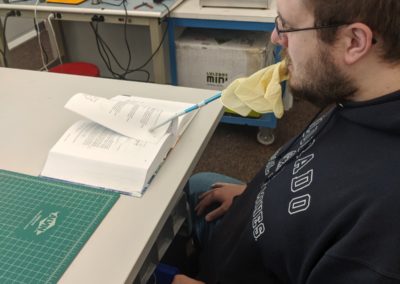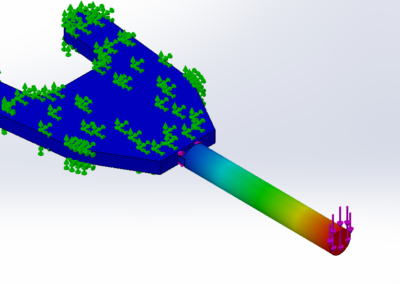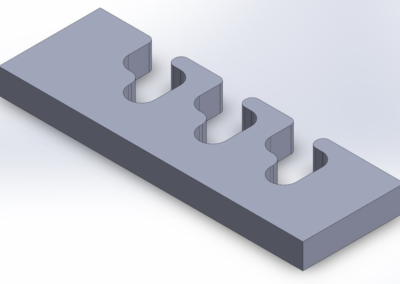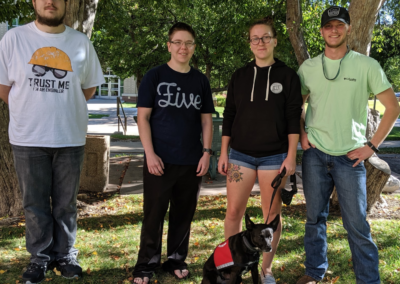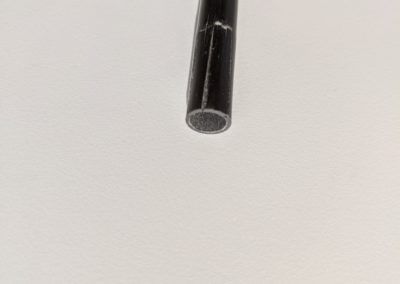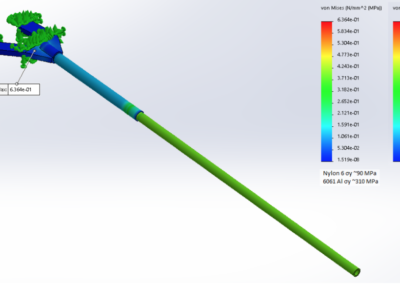StickUP – Swappable Mouthstick
Overview
Problem Statement: To design a lightweight, high-quality mouth stick with taskspecific ends that users with high cervical injuries can select and swap without assistance as people with high cervical injuries have limited to no hand function. They use a mouthstick to interact with their environment in day to day tasks.
People who have been afflicted by high cervical injuries rely on a mouthstick for as much independence as possible. However, currently in the mouthstick market, there are no products with user-swappable endeffectors. This is important because this means that user independence is extremely limited along with accessible activities. The team’s goal was to add such a product to the market, that would be lightweight, dependable, and easy to use.
Our independence focused design relies on magnets between a main stick and end effectors (stylus/stiff manipulator, implement holder, and page turner) for quick and reliable user detachment and attachment. The design is composed of aluminum and carbon fiber and makes use of a popular market biteplate. The design is lighter and grants more control than most mouthsticks and creates more independence for the users. The design allows for new end effectors to be added and used so that modifications can easily be made to fit the personality of the user.
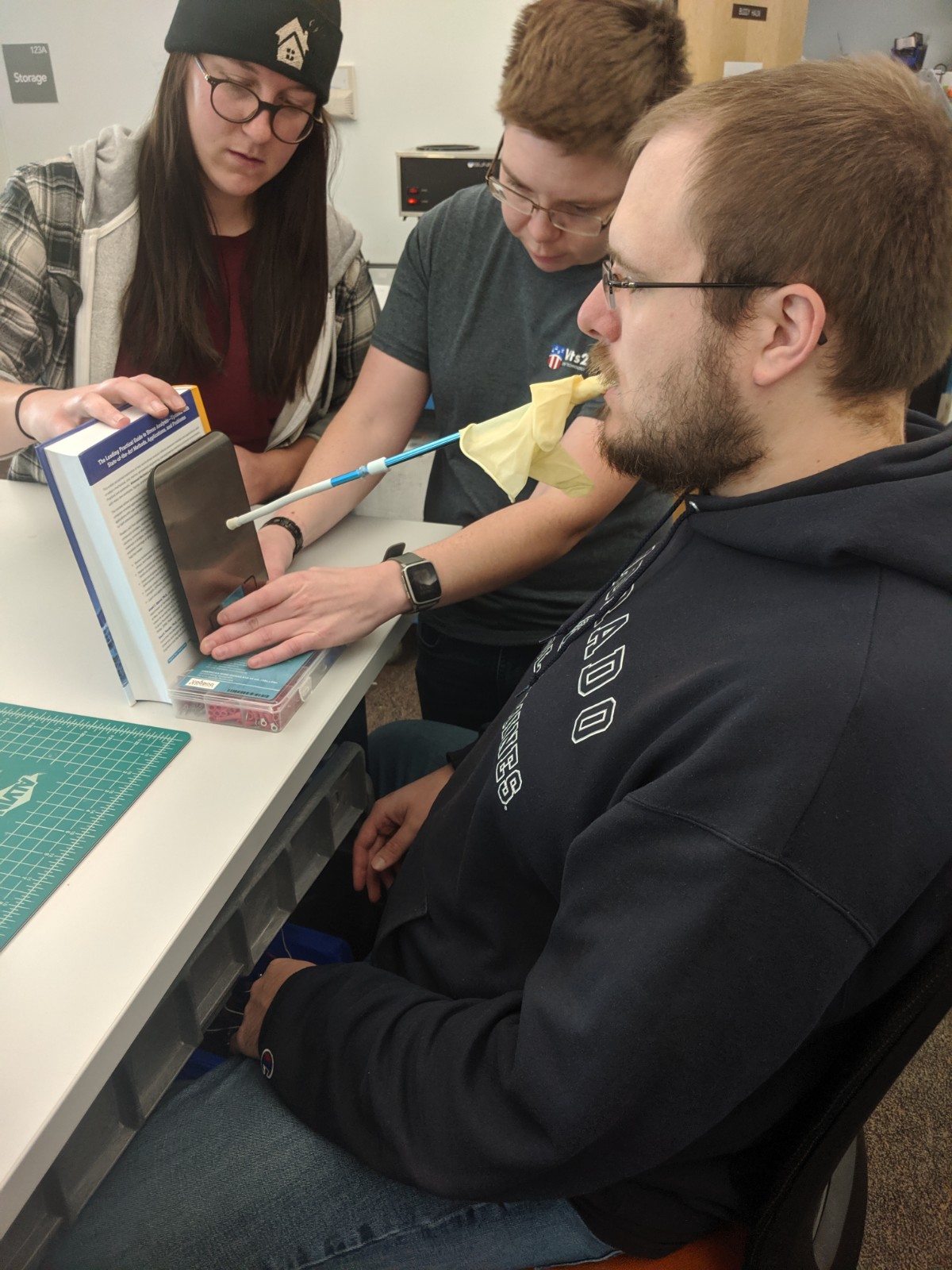
Elevator Pitch
Are you tired of replacing your mouthstick every other year? What about having several mouthsticks for different purposes? Or needing to rely on your assistant to change your end-effectors?

Shown here is a standard stiff manipulator mouthstick. This mouthstick is problematic, it has one operation and is known to wear quickly, needing frequent replacement. The mouthstick industry is small and leaves limited options. People can either purchase cheaper generic mouthsticks that break quickly or a most comfortable, but expensive mouthstick that is custom fit to their mouth. Neither of these options are ideal; both have a single function and give the user limited independence.
Our design has a solution to both of these problems, a solution that focuses on user independence and a modular design. A lightweight, durable mouthstick has been developed with the capability to allow the user to swap end-effectors independently. The secret to the design is simple magnets that allow for easy attachment and detachment of end-effectors by the user.
Its simple design also allows for custom end-effectors to be made for use with the stick so for each user, their stick can do exactly what they want it to do. This design works with the most common biteplates on the market as well, so users can go with a common cheaper option or a custom biteplate no problem. Being lightweight, with end-effectors made of carbon fiber, yet durable with an aluminum main mechanism, this new mouthstick is sure to set a new standard in the market.
Design Approach
Team StickUP was quick to start designing a mouthstick with planning and designing starting within the first two weeks of becoming a team. Early brainstorming was a quick in and out, ‘anything goes, ‘ discussion that led to several designs and defined the problem. Out of this process four designs were moved to the preliminary design review.
Twist Lock
Uses a BNC clip to snap an end effector to the bite plate stick with a twisting motion.
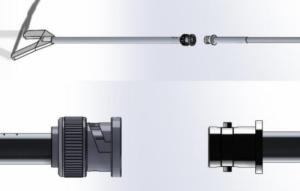
"Binder Clip"
Uses a design based on binder clips to open and close to grab and attach an end effector.
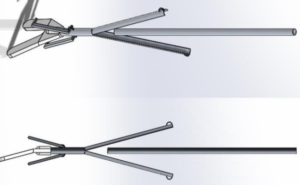
Friction Based
Holds different end effectors in place with a small amount of bite pressure to create friction.
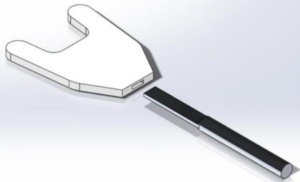
Magnet Based
Magnets join the biteplate stick and the effector sticks with a magnetic connection.
![]()
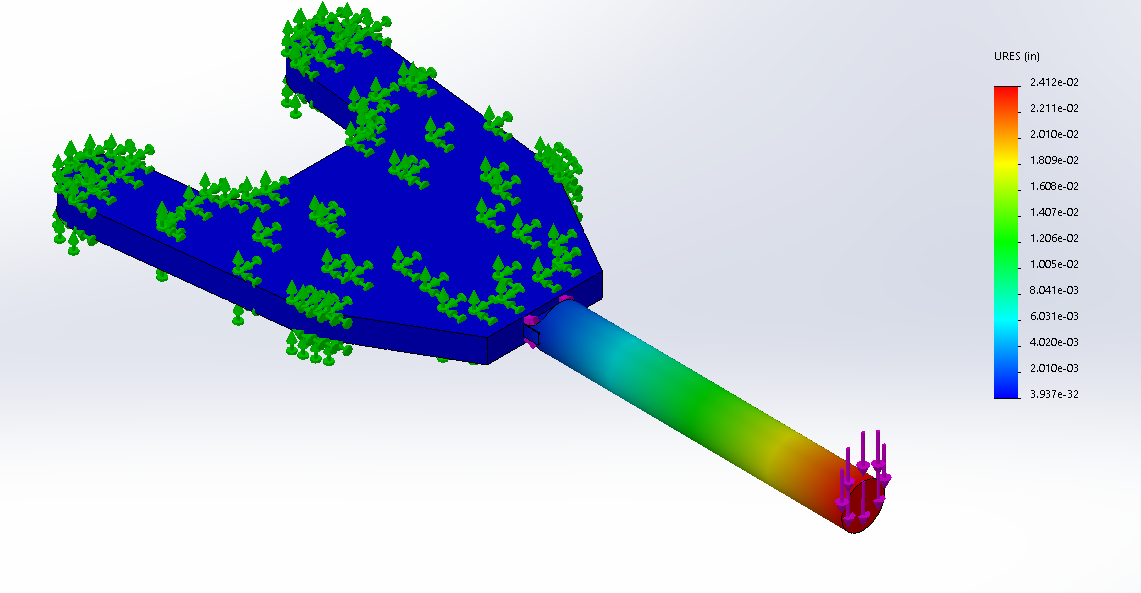
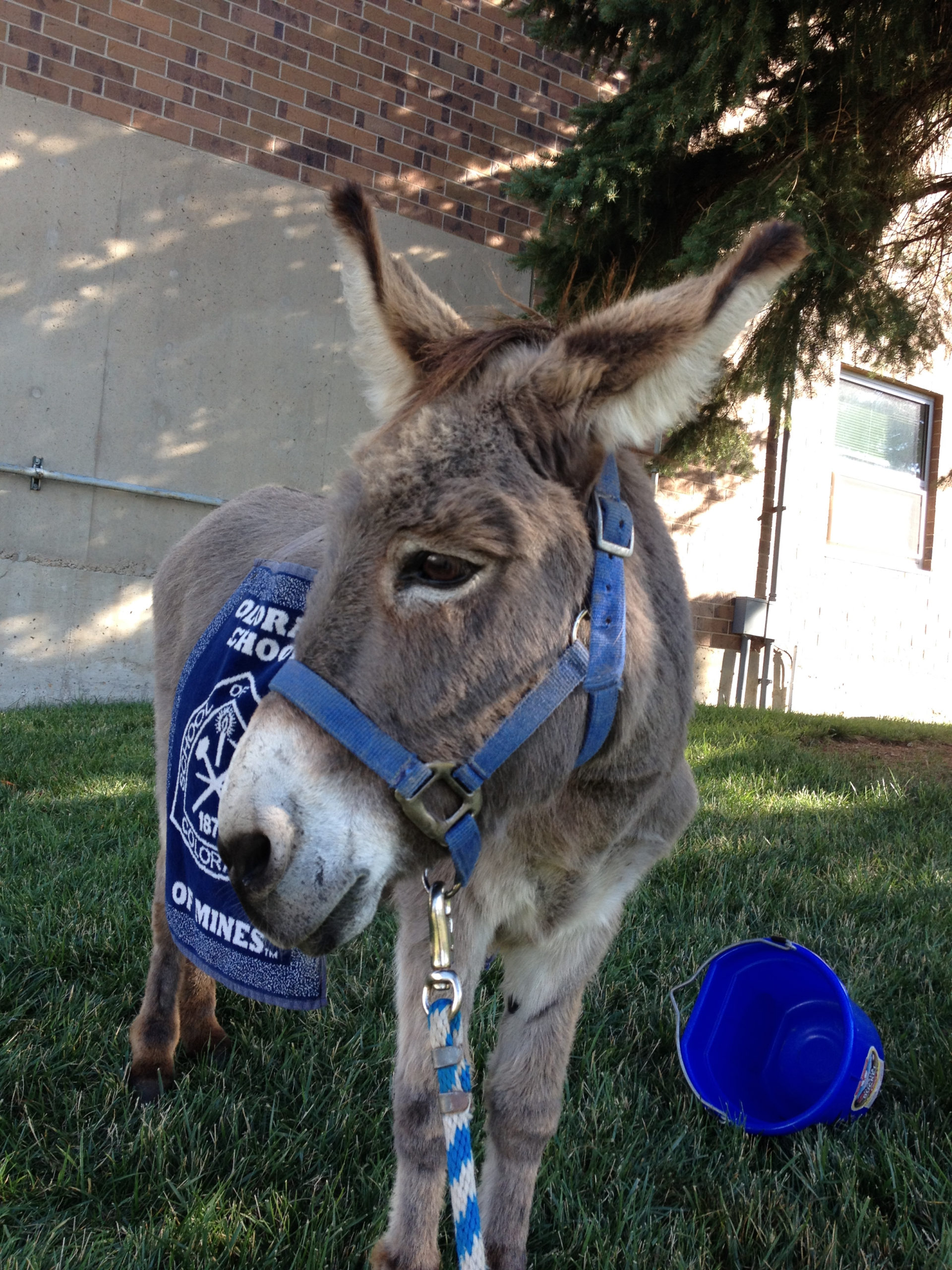
The team decided to move forward with two designs after creating a decison matrix, the magnet and friction designs.
Moving into the intermediate design review the team produced a functional prototype for each design. The left design is the magnet design and the right is friction. The biteplates were attached to a solid stick that either would snap to a longer hollow tube (magnet) or would slide into the biteplate and held down with light friction (friction).
Magnet Design
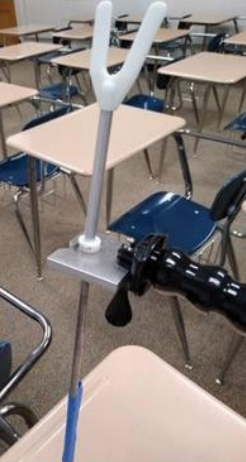

Friction Design
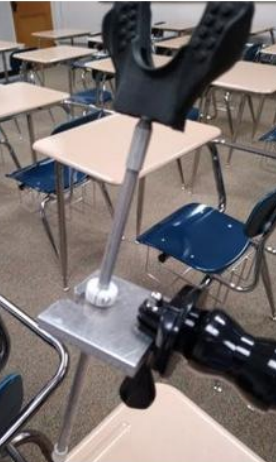

Design Solution
The friction design was found to be unfeasible to manufacture for both StickUP and Craig Hospital, so the design was dropped. The team moved forward and produced a magnet final functional prototype that would change after using testing. Below is the bill of materials for the magnet mouthstick (3 end effectors), the magnet mouthstick assembly, and the friction mouthstick assembly.
In the first functional prototype, the initial magnet based design had an aluminum on aluminum interface. This rubbing would cause a build up of material and eventually cause issues with the design. To avoid this and reduce weight, the team changed all aluminum to carbon fiber. Carbon fiber was found to be extremely brittle and difficult to machine with; this difficult work ended up causing issues in the design. The final design was to be composed of a solid aluminum rod with a hollow carbon fiber tube. This would avoid all material build up, difficulty machining, and reduce weight to below the original Sammons-Preston mouthstick. This final design was never completely built and would have been final if user testing found that it was perfect. Otherwise, user feedback with testing would have adjusted the mouthstick appropriately.

Next Steps
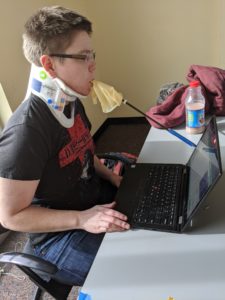 The final design is complete and would need to be created for user testing. No user testing was performed due to difficulties of getting a user to test with. The team did several tests and prepared a survey to quantitatively test the design with an actual user (see: https://www.surveymonkey.com/r/QBLV6ZP). The real user would also give important qualitative feedback that would drive a future design. This mouthstick was fairly far along, although it’s likely that the user would find some faults with it, if they thought it was perfect it would be ready for Craig Hospital to produce. The next steps explicitly would be to get user feedback and iterate the design based on that feedback.
The final design is complete and would need to be created for user testing. No user testing was performed due to difficulties of getting a user to test with. The team did several tests and prepared a survey to quantitatively test the design with an actual user (see: https://www.surveymonkey.com/r/QBLV6ZP). The real user would also give important qualitative feedback that would drive a future design. This mouthstick was fairly far along, although it’s likely that the user would find some faults with it, if they thought it was perfect it would be ready for Craig Hospital to produce. The next steps explicitly would be to get user feedback and iterate the design based on that feedback.
Meet the Team
Charles Huffman
 A straight shooter from North Carolina, is heavily opinionated but is still open-minded. This allows him to help find the best solution to any problem. His positive attitude and humor always keeps the conversation going. His main focus on the team was budgeting and material supply but his flexibility put him anywhere where help was needed.
A straight shooter from North Carolina, is heavily opinionated but is still open-minded. This allows him to help find the best solution to any problem. His positive attitude and humor always keeps the conversation going. His main focus on the team was budgeting and material supply but his flexibility put him anywhere where help was needed.
Randy Cook
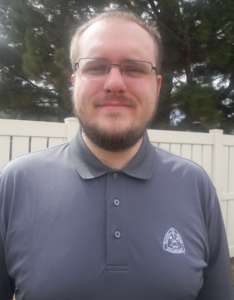
Known throughout Mines as a Manufacturing Processes TA and to a select few, Randy Mays, don’t let the soft spokeness and smile fool you. Randy is for lack of a better term, a mathematical genius. He is the team’s technical lead and headed a majority of calculations needed for mouthstick design such as axial stress and torque. The Solidworks extraordinaire had no issues when it came to performing FEA simulations on each mouthstick design, finding flaws and presenting solutions.
Amber Adams
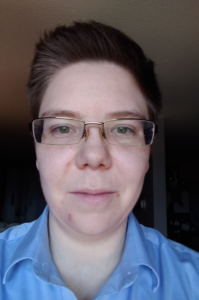 Military background, stubborn, and strict, Amber made a fantastic SCRUM Master. She maintained the team’s course while navigating a new Mines’ SCRUM procedure and managed the team’s drives with all of their proprietary information. Obviously, an excellent record keeper, handled a majority of charts and report requirements.
Military background, stubborn, and strict, Amber made a fantastic SCRUM Master. She maintained the team’s course while navigating a new Mines’ SCRUM procedure and managed the team’s drives with all of their proprietary information. Obviously, an excellent record keeper, handled a majority of charts and report requirements.
Theresa Osborne
 As the quietest member of the team, it may surprise you that she is the team’s communication lead. What Theresa lacks in her Solidworks skills, she makes up for with her extreme professionalism and writing eloquence. Maintaining a relationship with the team’s advisor and client, meant that all parties involved were always on the same page and always moving forward.
As the quietest member of the team, it may surprise you that she is the team’s communication lead. What Theresa lacks in her Solidworks skills, she makes up for with her extreme professionalism and writing eloquence. Maintaining a relationship with the team’s advisor and client, meant that all parties involved were always on the same page and always moving forward.
